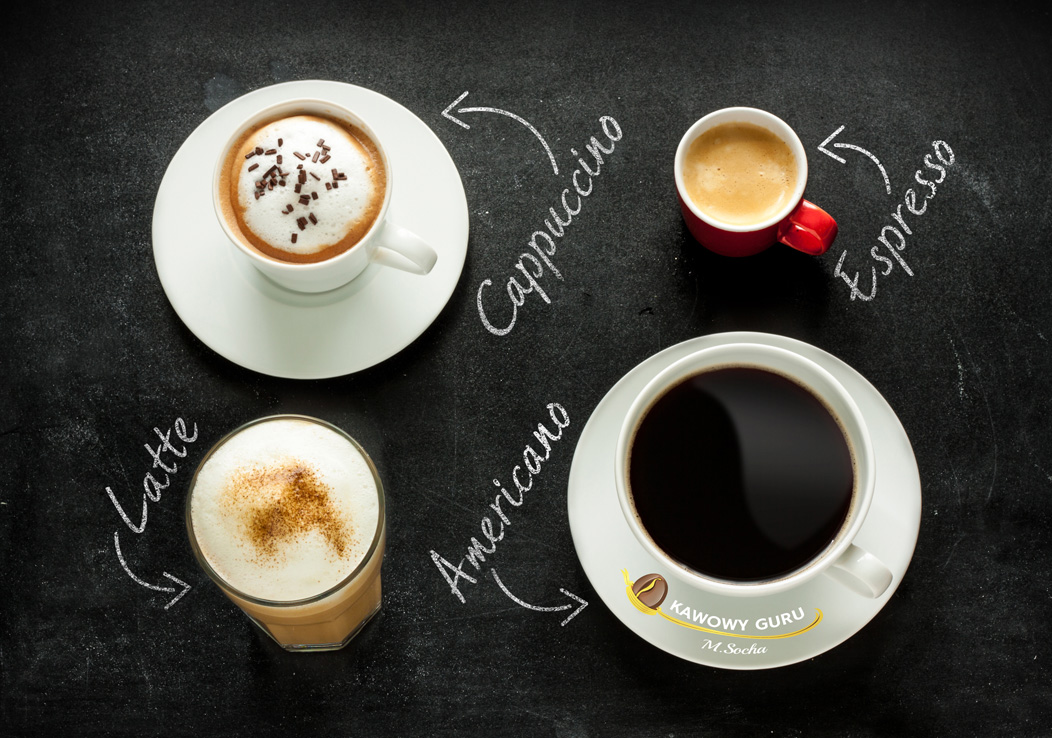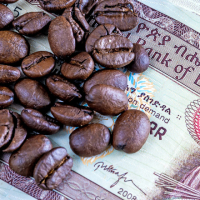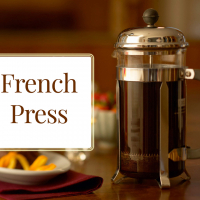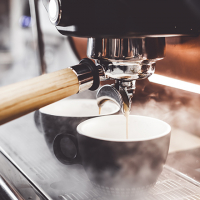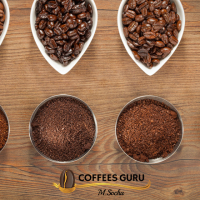Espresso, cappuccino, latte, americano… Surely most of you know which coffee to choose for yourself. But what are the differences between other coffees?
Espresso – everyone knows. Latte has a higher amount of heated (but not frothed) milk than cappuccino. Americano is a ,,big black coffee”. But what to choose when you can see coffees like flat white, Romano or Marochino listed in the menu? Gamble and pick randomly or just take cappuccino that you know very well? This short guide will help solve your problems!
First, short explanation. This article focuses on coffees based on espresso, which means a more or less ,,Italian” coffees. Besides Italy, there is a whole world of different coffees and different methods (I already wrote an article about AeroPress, which is a great coffee making tool). Anyway most of the drinks I’m going to write about are so popular, that you can probably find anywhere, so it’s a good idea to give them a closer look. Let’s begin!
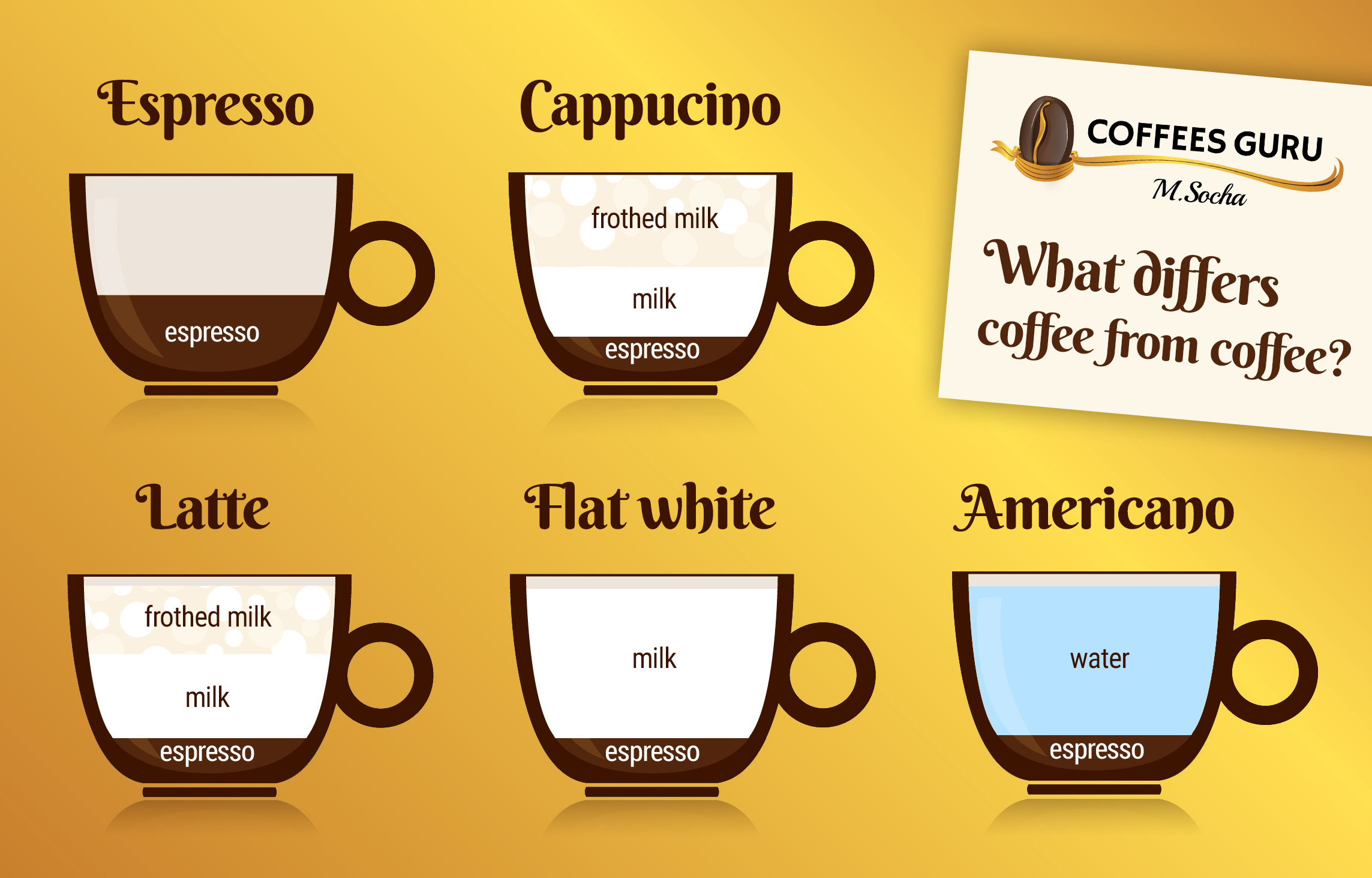
Espresso – one of Italian symobs, right next to Colosseum or Ferrari. Espresso deserves a separate article, so I will just list some important information: it is 25-30 ml, extraction time (water flowing through ground coffee in coffee machine) about 25 seconds, water temperature 88-92°C. ATTENTION! There is not something like ,,expresso”, that you can sometimes hear from customers in cafes. The name ,,espresso” has nothing to do with brewing speed, it comes from Italian adjective espressivo, that means expressive.
Cappuccino – following right behind espresso, that it’s based on. Cappuccino uses about 100 ml of milk, which after frothing should volume around 125 ml. According to Italian standards, cappuccino should be around 150 ml. Milk foam on top should be 1-2 cm thick, deprived of air bubbles and have creamy consistency. The name ,,cappuccino” comes from Capuchin friars habit color – brown-white.
Latte – where’s cappuccino, there also is latte. Latte has more milk (,,latte” means milk) than cappuccino, should be 200 ml or more and should have a small amount of frothed milk at the top. In Italy, Latte (and cappuccino) is traditionally drank with breakfast.
Flat white – this coffee comes from Australia or New Zealand (there still are disputes about its origination). It’s traditionally made of double espresso, which is poured with hot milk (it can be a little frothed, but only a little). As the name suggests, it should be flat at the top.
Americano – espresso poured with hot water. The amount of water can be very different: starting from 25-30 ml (which means 1:1 espresso-water scale, this kind of coffee is called ,,italiano” or ,,short americano” in America) and ending at 470ml. It’s believed that americano originated from Italy during World War II. American soldiers asked to pour water into espresso to get a coffee similar to the one they drank at home.
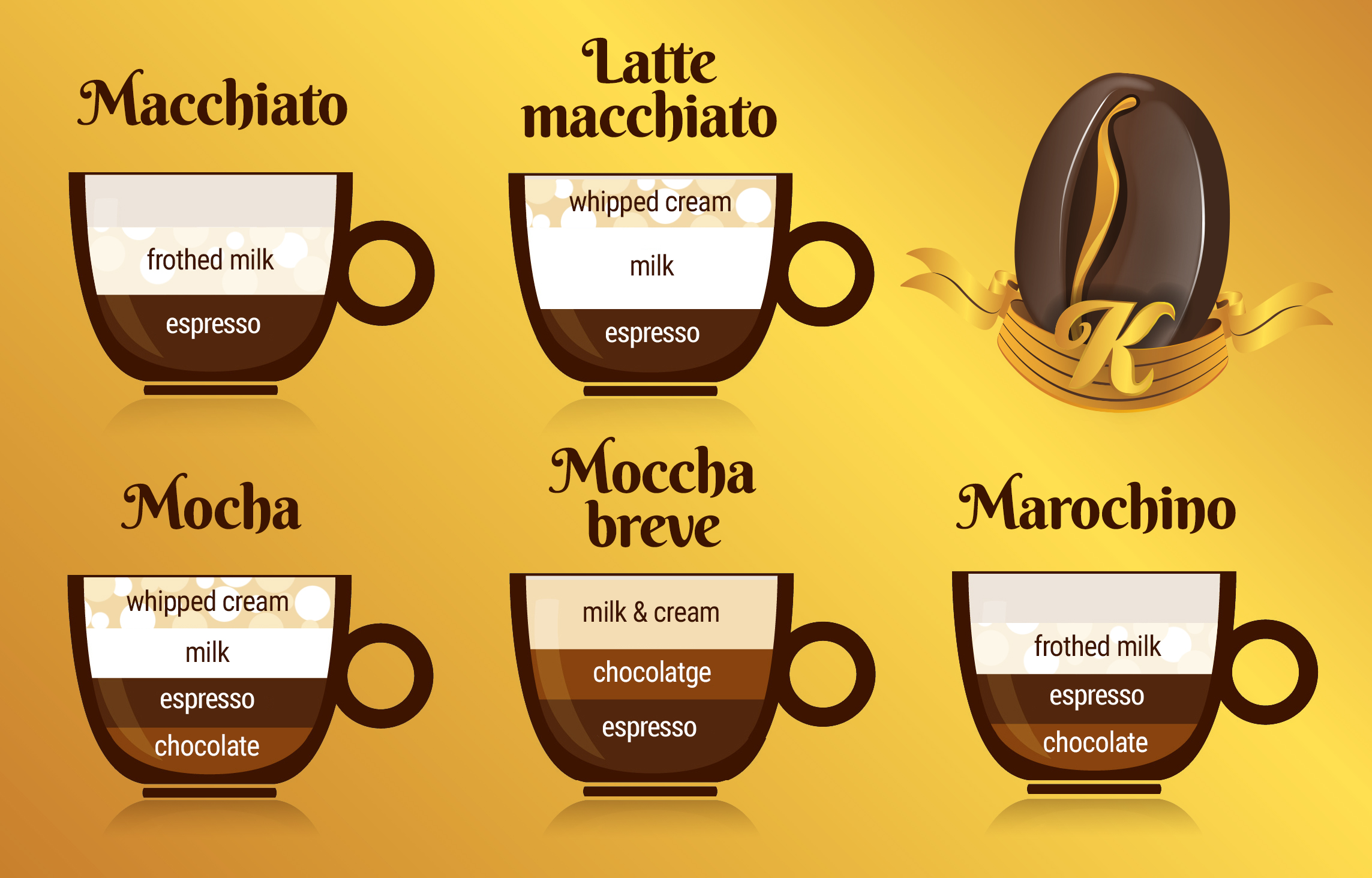
Macchiato – espresso with a little amount of frothed milk. In Italian Macchiato means tainted. We can say then, that this coffee is tainted with a small amount of milk.
Latte macchiato – it’s the reverse of macchiato. Latte macchiato is a hot frothed milk with the addition of one portion of espresso (sometimes two). Everything can be covered with whipped cream, but it’s not compulsory. A well made latte macchiato has 3 layers: milk at the bottom, milk mixed with espresso in the middle and milk foam at the top. It’s at least 200 ml and is often served in transparent glass, so the layers can be easily seen.
Mocha – a variant of latte. It’s an espresso with addition of chocolate (can be powdered or as a syrup) and hot milk with whipped cream at the top.
Mocha breve – a variant of mocha. Milk and whipped cream is replaced with heated mix of milk and cream. This coffee comes from America and isn’t that popular in Europe.
Marochino – it’s an espresso with addition of cocoa or chocolate syrup and a bit of frothed milk. This coffee comes from Italian Alexandria and it’s name comes from its color. In Italian Marochino means the type of light brown skin.

Irish coffee – this time not from Italy, but other side of Europe. Irish coffee is an espresso (or just strong black coffee) with addition of heated whiskey, brown sugar. It’s decorated with whipped cream. The trick is to not let the cream mix with coffee and whiskey. It’s served in a beer glass, which makes it look like stout beer.
Vienna coffee – as the name suggests, thus coffee comes from Vienna. It’s an espresso or strong black coffee brewed in a different way, decorated with whipped cream. Some recipes recommend melting chocolate in a saucepan, then adding the coffee into the chocolate. Then pour it into a cup and decorate with whipped cream.
Romano – it’s an espresso served with a lemon peel, sticking out at the top of the coffee. There is also a version with the addition of lemon juice. Some people believe that coffee with lemon helps dealing with hangover, but as I already wrote in the myths of coffee article, it’s not true.
Corretto – an espresso with a little addition of alcohol. In Italy, traditionally with the use of grappa, but other alcohols (brandy, cognac, whisky) are also as popular. In some bars, espresso and alcohol are being served separately, so you can experiment with alcohol amount. It can optionally be served with frothed milk.
Freddo – a cold espresso. There are many different recipes for making it, but the most popular one recommends pouring ice cubes with hot espresso and adding (optionally) alcohol (e.g. grappa or brandy). Other version recommends using cooled down espresso and some other recipe tells to replace alcohol with a small amount of frothed milk.
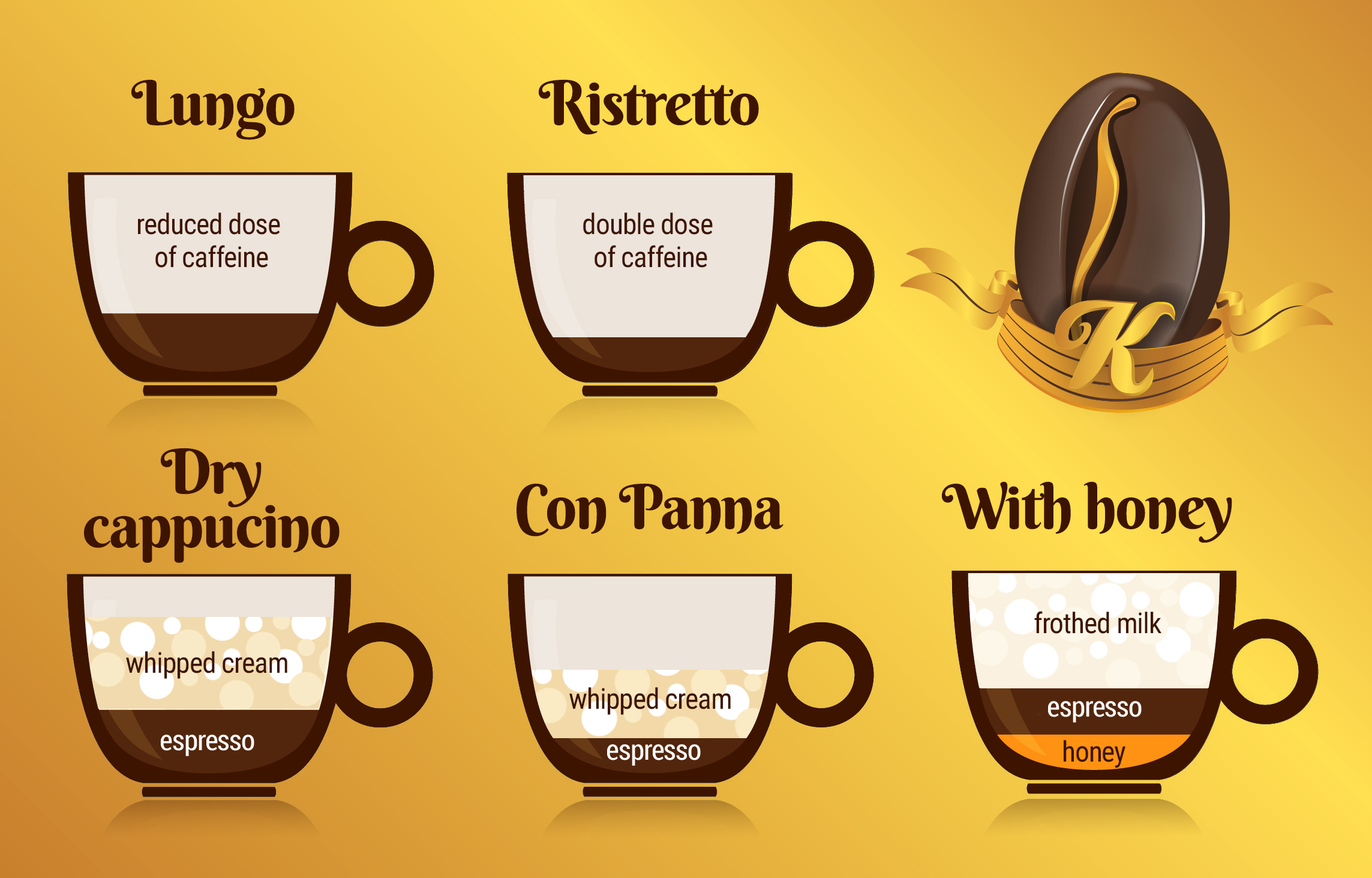
Lungo – which means ,,extended” espresso. In Italian Lungo means long. It’s made just like espresso, but after getting around 25-30 ml of extract, instead of stopping it’s continued until 50-60 ml, which makes the coffee more delicate. Lungo shouldn’t be confused with americano, which is an espresso with the addition of hot water.
Ristretto – is the opposite of lungo. In Italian Ristretto means limited. It’s an espresso with lower amount of water (around 15 ml), which is literally one sip.
Dry cappuccino – it’s a cappuccino with a low addition of frothed milk and high addition of milk foam (it’s also named cappuccino scurro). Sometimes in America the milk foam is replaced with whipped cream.
Con panna – espresso with a small amount of whipped cream.
With honey – espresso with addition of honey and frothed milk at the top.
As you can see, that’s a lot of coffees. The list above thoroughly describes the diffrences between most of espresso based coffees. However, different countries (or even regions of the same country) can change the meaning of some names. For example, in America, espresso con panna and Vienna coffee are practically the same, the same thing goes with americano and lungo. Dry cappuccino is popular in America with the addition of whipped cream and in Europe it may be considered as Vienna coffee. In Australia flat white will be the same as latte in Italy.
I hope that this article helped you understand some mysterious coffee names.
Check Coffees Guru regularly and follow me on my Facebook profile. In just a few days, I will unravel the secrets of espresso!


